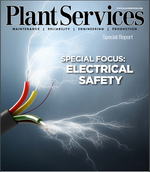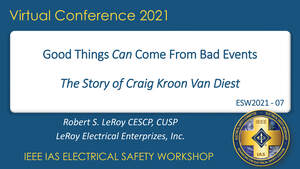LEE, Inc.
Objective and Measurable
A white paper exploring mandates and techniques to determine worker qualification and compliance to established work practices
Law mandates establishing and monitoring safe work practices. In the United States the ‘law” is OSHA, Occupational Safety and Health Organization. To comply with this directive a company must acknowledge hazards that may exist in their facility and operation and agree upon the safe work practices employees will employ when working on or near them. Training then follows to ensure employee knowledge and monitoring processes established to ensure compliance. Variations of this model exist worldwide. Read More
Special Focus: ELECTRICAL SAFETY
Moving from Training to Compliance
IEEE Copyrighted Material Paper No. ESW2014-33
The focus on training workers to be aware of and have respect for electrical hazards has dramatically increased in recent years. Employers both large and small recognize their responsibility in providing timely and appropriate information in combating this toxic workplace substance. Fatalities and injuries due to electrical contact are on the decline mainly, in this author’s opinion, due to this increased awareness. Statistics on arc flash injuries are much less exacting or conclusive. After workers demonstrating in a training environment the correct work practices and understanding it could be assumed then that workplace electrical injuries would have a more timely and marked decline. Read More
Hazard or Risk Analysis, Overcoming the Human Factor
Copyright Material IEEE Paper Number ESW2015-19
Governing bodies such as OSHA in the US and OH&S in Canada firmly place on the shoulders of the employer the responsibility of workplace safety. Job hazard assessments are a critical component in the job planning process. These regulatory agencies have a simple statement when dealing with the electrical hazard. “Turn it off.” Although this is the ultimate means of protection it is too often not followed. Common activities such as testing, troubleshooting, setup and commissioning preclude that mandate. Leaving circuits in an energized state could result in an electrical incident and injury. Read More
Enhancing Electrical Safety Without Touching a Tool
Copyright Material IEEE Paper Number ESW2016-2
When dealing with electrical safety the most critical points can often be missed. Much focus has been placed on wearing appropriate PPE to meet or exceed the hazard level encountered. Worker training has been placed into overdrive resulting in reduced injury severity and greater awareness of individual responsibility where exposed and energized parts and conductors are encountered. PPE is showing up in the workplace at record numbers and manufacturers are responding with innovative and cost effective technologies. The required PPE has become not only an affordable part of even the smallest of employer’s cost of doing business but also comes in varieties, colors and options which brings greater worker comfort and acceptance. Read More
A Path Towards Effective Electrical Safety
Robert S. LeRoy, CESCP, CUSP
Controlling worker behavior to model safe work practice expectations often seems like a futile task. Safety managers and supervisors plan and strategize using creative ideas, policies and programs and still the less than desirable results remain. The electrical industry worldwide has embarked on a mission to increase training and hazard awareness that is showing some positive results in lowering accident rates and worker loss time incident (LTI) rates. Unfortunately history shows that too often workers view these programs as an event that is endured to satisfy the goals of the safety program. Sustainable lowered rates are not achieved, as the worker’s habits have not been addressed. When faced with the stress or pressure of a task needing performed they often digress to their old habits. When working in a culture that is driven by convenience or comfort accidents are unavoidable. Read More
Equipment Control Processes Used for
Electrical Safe Work Practice Compliance
Copyright Material IEEE Paper Number ESW2017-15
World-class organizations use sophisticated control processes to ensure their success. These companies may use a combination of feedback and feedforward technologies to be either reactive or proactive to disturbances destined to upsed their carefully designed systems. One of the hardest company processes to control has proven to be worker compliance to established safe work practices. Recently much has been done in the way of research to discover keys that counteract unwanted behaviors. Read More
Uncovering the Indicators that Lead to Disaster
Copyright Material IEEE Paper Number ESW2018-17
One of the hardest things safety professionals, managers, front line supervisors and design engineers have to do is after an incident or accident has taken place. Discovering the key indicators on how highly skilled, trained, competent and qualified workers managed to get themselves hurt is both excruciatingly painful and time critical. Ensuring a similar incident cannot occur is essential. If US OSHA conclusions are true, that approximately 80% of all accidents happen due to something a worker did or failed to do, there must be equal or greater attention given to the preparation of every job task as there is during its performance. Read More
Good Things Can Come From Bad Events
The Story of Craig Kroon Van Diest
|
© 2017-2024 WESS Workplace Electrical Safety Solutions is a division of LeRoy Electrical Enterprizes, Inc.
|
Web Hosting by iPage | Web Design by C.Feder
|




